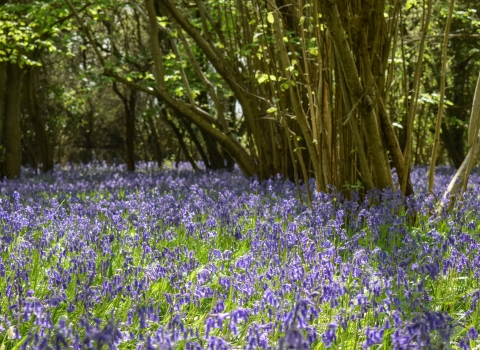Back in 1993 a group of biologists and volunteers gathered in Brampton Wood, Cambridgeshire for a UK first – the release of hazel dormice in the original reintroduction of the species. The Wildlife Trust for Beds, Cambs and Northants (WTBCN) had bought this ancient woodland in 1992, successfully fundraising to purchase it from the MOD, just in time to provide ideal habitat for dormice a year later.
The descendants of this first population at Brampton Wood, sourced from Somerset, are still going strong to this day and have now expanded beyond the perimeter, found in the hedgerows beyond the wood; woodland restoration and maintenance work by the Trust during the last 30 years has provided the optimum dense habitat mix for the species to flourish.














